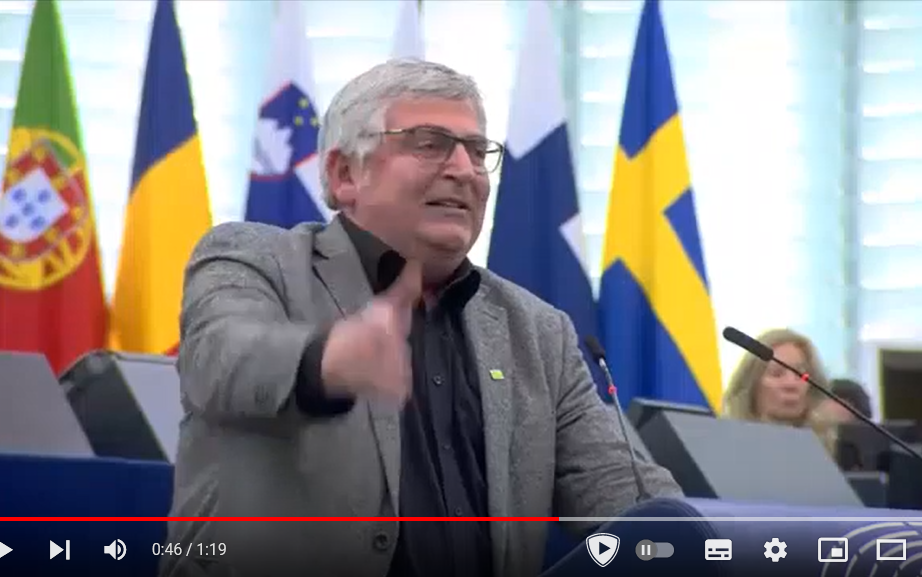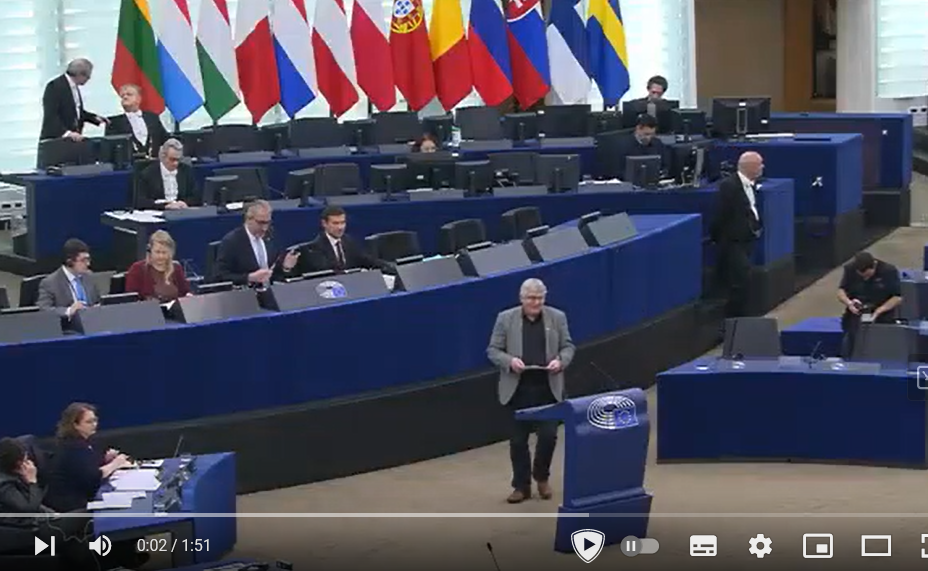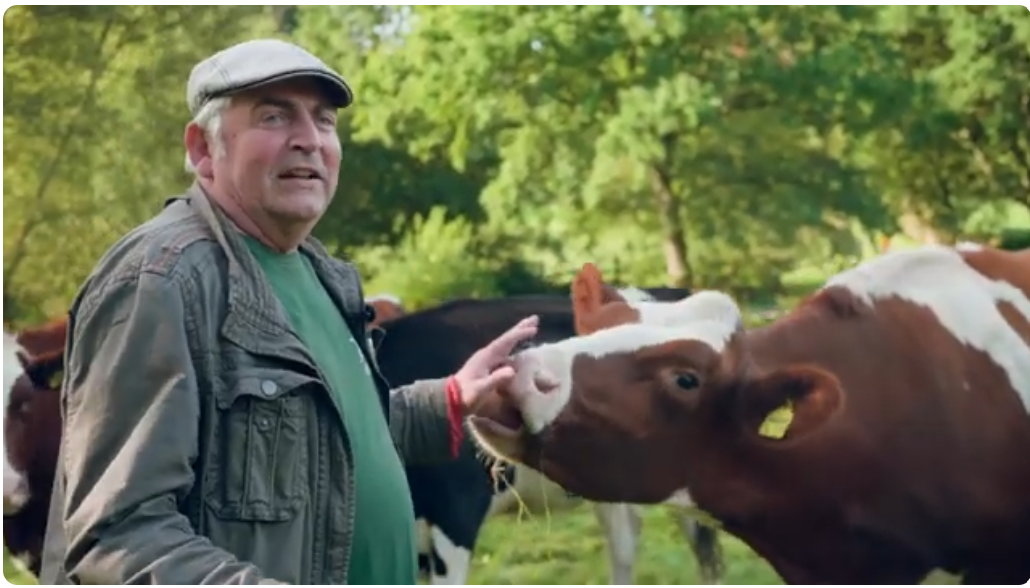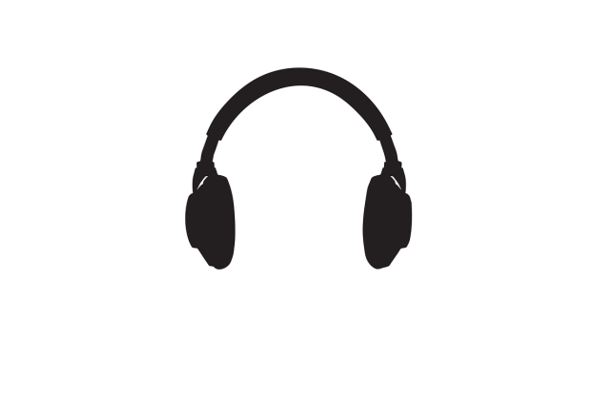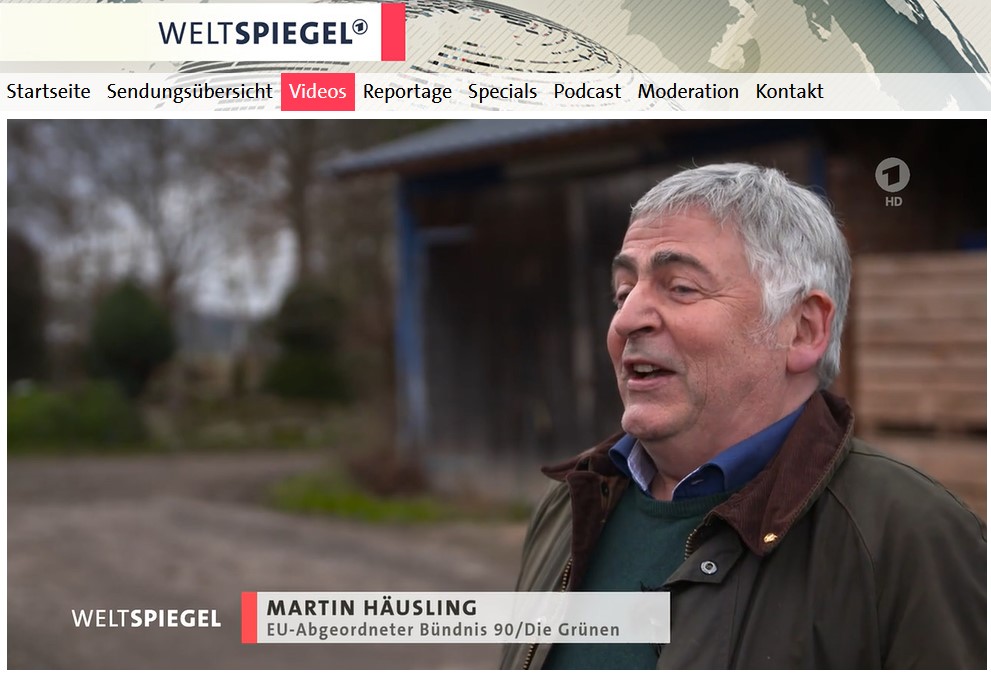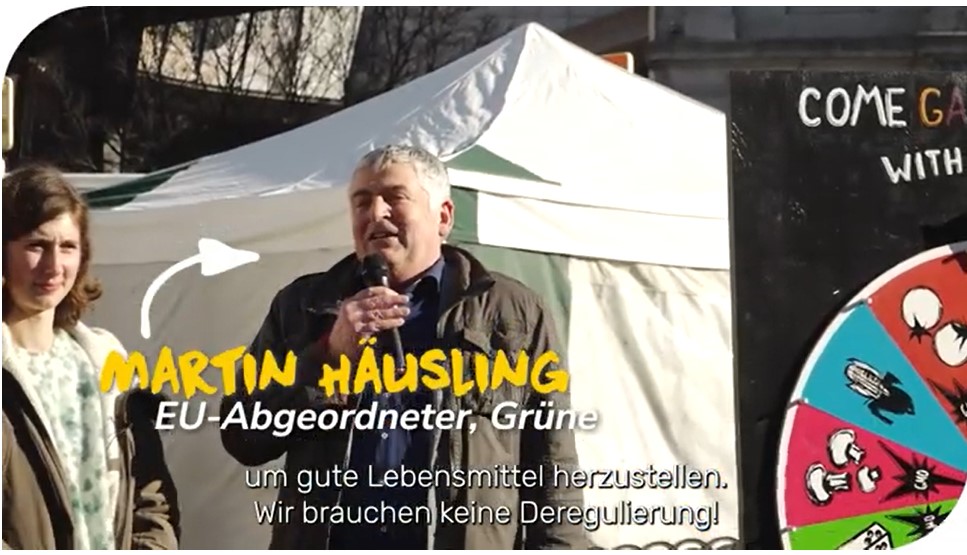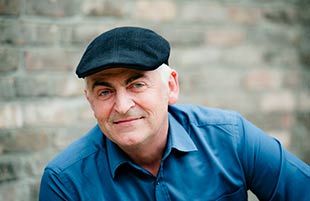The Ecologcist - Toxic glyphosate herbicides fly under the EU's regulatory radar
the ecologist by Pete Farrer & Marianne Falck
The widely used herbicide glyphosate has been judged 'safe', write Pete Farrer & Marianne Falck. But by the time it's used, it's in a 'formulation' with toxic surfactants, which escape EU regulation despite their known dangers. Germany alone has forbidden the use of the most dangerous surfactant - but is keeping its evidence secret.
Earlier this year, Germany declared the active substance glyphosate, a component of many herbicides, as 'safe' in its draft re-assessment report.
Germany's words have weight as it is acting as the Rapporteur Member State for this active substance. But an investigation into the report has exposed another story - it is far from 'safe'.
It is well known that glyphosate is one of the most tested active substances, and is seen as a simple and cost-effective way of controlling weeds in a variety of situatuions.
Glyphosate is the active substance in the most widely used herbicide worldwide called RoundUp®, sales were valued at US$ 5.46 bn in 2012 and are expected to reach US$ 8.79bn [i] by 2019; it is big business.
However, the active substance alone is not sprayed by farmers, councils or 'you' in gardens and driveways. Because to work efficiently, it needs additional chemicals called 'surfactants'.
A shocking omission
The widespread use of glyphosate greatly increases the chances that it will be ingested by humans and farm animals. It is now used to desiccate cereal, pulse and oilseed crops prior to harvest - where it produces residues in some of our staple foods [ii]
It is also used extensively on GM crops engineered to be 'Roundup Ready'. This does not (yet) take place in the EU, however such crops dominatye in North and South America and account much of the soy and maize imported to the EU for animal feed.
But whilst active substances are tested and regulated on a European level, pesticide formulations, such as Roundup®, are not.
Because of an initial suspicion [iii] that the surfactant called POEA (polyethoxylated tallow amine) might be toxic for humans, animals and the environment, the German authorities have taken their own protective action.
In the meantime, the EU has failed to take any action at all. "Given the alarming results of independent studies [iv], this is simply shocking", says Martin Häusling, Member of the Greens / European Free Alliance Group.
"Even though I have been criticising The European Food and Safety Authority for many years because of its conflict of interest with the agricultural industry, it would be wrong to blame them alone. The national authorities play a big role in this process."
But in Germany, things are different
Since the late 1990's, the German Federal Institute for Health Protection of Consumers and Veterinary Medicine (BgVV) has called upon Member States in the European Union not to accept glyphosate products containing the surfactant POEA based on the high cytotoxicity [v] of the compounds.
However Monsanto and Cheminova - who at the time were jointly submitting glyphosate for re-approval - quickly disputed all the evidence that was presented [vi]. A 1999 report stated:
"Accordingly, in the formulations for which toxicological data has been submitted as part of the joint dossier of Monsanto and Cheminova, surfactants of this type are not contained any more." [vii].
But the Agro-Chemical companies continued to manufacture and sell products containing POEA. A spokesperson of Monsanto praised surfactants like POEA because "the amount of active ingredient needed per treated area can be reduced."
He also stressed that "the development of new products requires several years of research and development and review by competent public authorities and Europe has some of the highest standards in the world."
These "high standards" seemingly have started to fail, because since 1999 there was scientific consensus that the single active substance approach to risk assessment was flawed.
Finally in 2005 the EU revised the Residue Directive and changed it into Regulation (396/2005) and made Cumulative Risk Assessment mandatory "as soon as methods to assess such effects are available [art 14.b]." [viii]
The next step would be a framework developed by European Food and Safety Authority. But very little has happened since then.
The 'single active substance' approach to risk assessment is flawed
By 2008, more evidence on this specific surfactant was mounting. A paper by J. M Brausch et al. in 2007 [ix] "found all POEA formulations to be extremely toxic".
This prompted the German Environmental Agency (UBA) to request more study data specifically about chronic toxicity. What followed was a "very intense professional dispute" [x] between the UBA and agro-chemical companies, as a source from UBA stated.
The result: The companies did not submit any data, but agreed to replace POEA in the glyphosate formulations - however this resulted in the UBA still not having the data to prove chronic toxicity.
Two years later the German Federal Institute for Risk Assessment (BfR) carried out its own toxicological evaluation of the glyphosate-POEA formulation, after a German forestry worker developed chest pain with rapidly increasing severe respiratory distress and fever up to approximately 38°C.
His pathology revealed "toxic inflammation of the lungs" that was significantly different from bacterial infection [xi].
This resulted in the German authorities prohibiting the usage of certain glyphosate formulations with a high content of POEA for the production of animal feeds in order to avoid a risk of toxins being passed through the food chain [xii]. But how are these formulations tested?
Each time glyphosate is risk assessed in the EU it is done by the presentation of one 'representative formulation' from the vast quantity available on the market [xiii].
This time, the representative formulation that has been presented by the agro-chemical industries European Glyphosate Task Force (GTF), does not contain the surfactant POEA [xiv]. Only by coincidence? Or was it the least toxic formulation that the GTF could find?
Germany acts - but key data remain under lock and key
This year the German Federal Institute for Risk Assessment and other German safety authorities published their draft re-assessment report (RAR) on glyphosate and the representative formulation, in the process re-assessing hundreds of studies and public domain literature.
Then the UBA did something exceptional. They included a chapter 'Further toxicological data for other potential co-formulants' [xv] about the surfactant POEA to make sure all Member States are informed that nearly all toxicological endpoints investigated are clearly more toxic than glyphosate alone.
By the end of this year all formulations containing POEA will have been removed from the German market. So what happened in Germany for them to move from 'restricted' to formally 'banned'?
Answer: we don't know. All requests for a list of which companies had to replace POEA, exactly when, and which surfactants are now used instead has been declined by German authorities on the basis that the information constitutes 'Trade Secrets'.
"The protection of public health must have the highest priority - and not the interests of companies or authorities", commented Martin Häusling. "The public must have the right to check that. The European Precautionary Principle is even as important as the Freedom of Information."
What about the rest of us?
There are only 91 glyphosate products registered in Germany [xvi] - of which only one remaining product contains POEA, which will be removed by the end of the year.
But there are 424 glyphosate products registered in the UK [xvii] and it is not known exactly how many of these products contain POEA). Rosate 36 is one of UK's most widely used herbicides in agricultural, horticultural, industrial, amenity and forestry herbicides in use that contain the surfactant POEA.
The discussion about the surfactant POEA shows that the classic method of testing and regulating individual active substances for toxicity does not work. Or as a source from the BfR said:
"We should have a deeper look at co-formulants in the future. The formulation of glyphosate and POEA is an important lesson in that there might be specific surfactants, which can increase the toxicity of the active substance. We don't assume this is common, but it is an increasingly important factor within the field of toxicity which we are aware of."
But this story is not about just one surfactant. What is now known is that surfactants can be synergistic with glyphosate. When chemicals are synergistic, the combined effect of two chemicals is much greater than the sum of the effects of each agent given alone.
Even Monsanto say in one of their own patents [xviii]:
"By exploiting a newly discovered synergistic interaction between two classes of surfactant applied together with the glyphosate, surprisingly enhanced herbicidal effectiveness is obtained by this method."
But the formulations remain secret!
Due to 'data confidentiality' or putting it bluntly 'data secrets', it is not known what these surfactants are, how much more toxic the formulations might be, or even how many different potentially toxic products there are.
The European Court of Justice ruled [xix] in 2013 that the European Commission should disclose industry safety and compositional studies on the pesticide glyphosate, which are currently hidden from the public under data secrets.
The Commission has appealed against the ruling [xx], but Croplife America, The National Association of Manufacturers of the United States and The American Chemistry Council have submitted an application to intervene [xxi].
It could be viewed as significant that the EU is protecting industry, by not revealing the content of emissions of pesticide formulations into the environment.
Pesticide formulations - as the German Safety authorities explained - are regulated on a national level. But the scientific studies that are presented for approval are carried out by the manufacturers themselves.
Only the authorities have access to these studies and have not been verified by independent scientists.
No EU framework for assessing formulations
"Any regulatory system that treats chemicals in isolation is necessarily flawed", commented Zac Goldsmith, the Conservative MP for Richmond Park & North Kingston.
"Chemicals interact with others when they're put out into the environment, and they interact when mixed with others in different chemical formulas."
"A proper, health-oriented regulatory system must look at the synergistic effects of chemical mixtures, and on that basis what we have at present falls far short."
The bad news is there is still no legal framework at EU level to assess formulations on a regulatory basis. The EU's own documentation admits:
"Current EU legislation does not provide for a comprehensive and integrated assessment of cumulative effects of different chemicals taking into account different routes of exposure". [xxii]
It is known that UBA reported POEA in 2012 as an "unacceptable co-formulant" for a so called 'negative list' [xxiii] to the European Commission. Again nothing happened. A spokesperson for the European Commission has only revealed that "The European Commission is currently preparing a request to the EFSA about POEA."
It has taken 15 years from initial suspicion that a glyphosate formulation was toxic, to approach a situation that it could be banned within the EU, and not just one Member State.
Tougher pesticide regulation of surfactants and formulations must be the next step.






